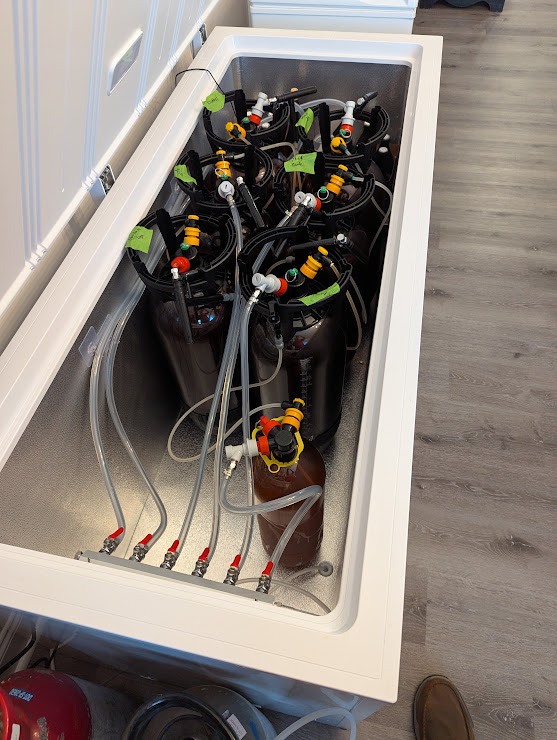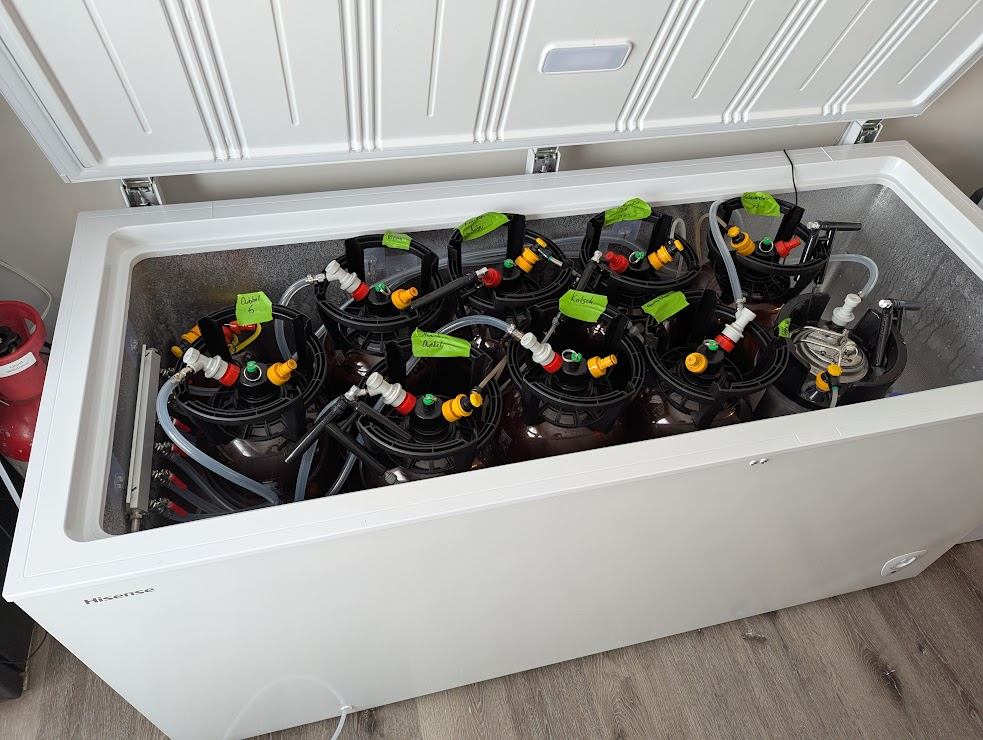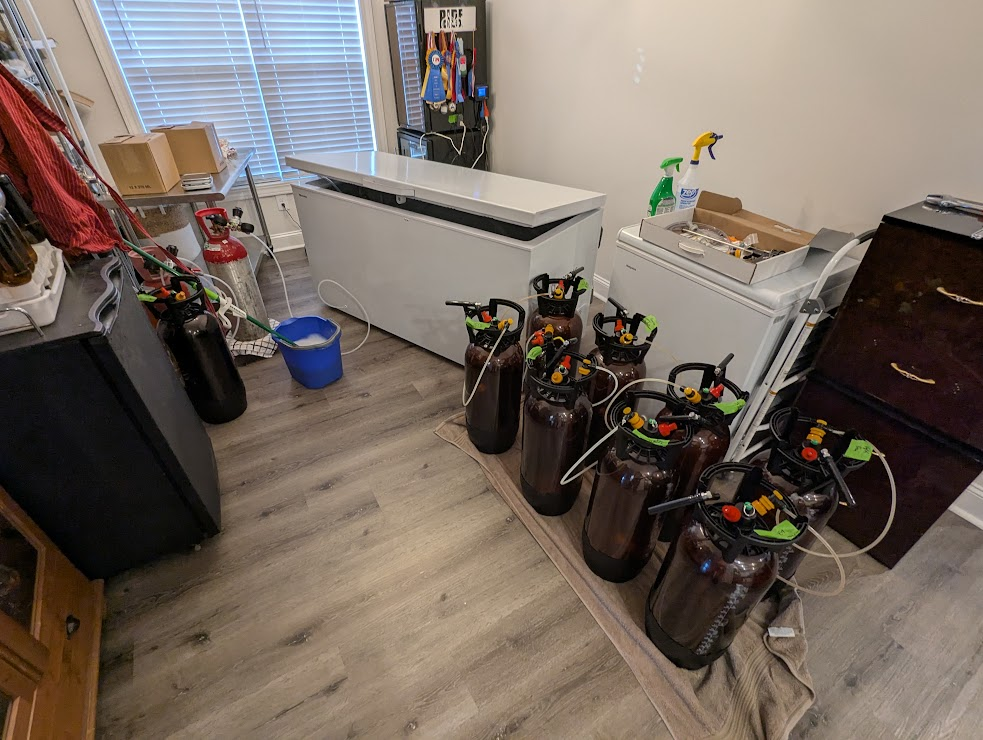It has been almost 2 years since I ditched bottles and went to a Draft Beer solution. There was lots of help available on HBT forums but it took a lot of hunting to address specific questions. So I thought I would briefly share some things I learned and hope others freely add suggestions based on their experience.
The beginning - I wanted 6 taps because I enjoy a lot of different styles and was not planning on using bottles anymore. That meant I needed a larger sized chest freezer. I went with 14 cu ft which gives me enough room for 8 corny kegs and a small tank of CO2. Why 8 with six taps? Easy... So I can cool/gas up the stout corny that will replace the one due to kick in the next week. At that time... I am ready to swap hoses and pour. Chilled and gassed up.
The hardest part at the beginning was brewing up enough beer to fill all the taps ... And making sure I figured out the best way of swapping kegs and planning. There is a 2-3 week lag between brew day and pour day under the best of circumstances (longer for lagers). So getting the routine to keep 6 taps in a pour ready state is not as easy as it sounds. I don't weigh my kegs to track. Instead I use time since I keep a record of brew days. For me, a beer I love that friends love to goes faster (English Brown ale and stout) than a stronger IPA which takes longer. In short, the beloved kegs are gone in about 40 days and stronger stuff lasts 50-65 days.
Maintenance Routines - I flush the lines about every 60-90 days and clean the taps at the same time.
I track when I got a tank refill so I have a good idea when that will kick. For convenience sake, I keep 2 tanks of CO2 and 2 tanks of beer gas. That way I don't need to race out to swap a tank. No hurries no worries.
Also - I clean the keezer out from time to time, about once every 4-6 months. The keezer is tilted slightly with a board under a corner. The corner is opposite of the drain hole... So it will flow out. I just use water and then spritz with some star San after drying the interior with "dog washing towels".
Who else manages a multi tap keezer/kegerator and what tips have you learned over time?
The beginning - I wanted 6 taps because I enjoy a lot of different styles and was not planning on using bottles anymore. That meant I needed a larger sized chest freezer. I went with 14 cu ft which gives me enough room for 8 corny kegs and a small tank of CO2. Why 8 with six taps? Easy... So I can cool/gas up the stout corny that will replace the one due to kick in the next week. At that time... I am ready to swap hoses and pour. Chilled and gassed up.
The hardest part at the beginning was brewing up enough beer to fill all the taps ... And making sure I figured out the best way of swapping kegs and planning. There is a 2-3 week lag between brew day and pour day under the best of circumstances (longer for lagers). So getting the routine to keep 6 taps in a pour ready state is not as easy as it sounds. I don't weigh my kegs to track. Instead I use time since I keep a record of brew days. For me, a beer I love that friends love to goes faster (English Brown ale and stout) than a stronger IPA which takes longer. In short, the beloved kegs are gone in about 40 days and stronger stuff lasts 50-65 days.
Maintenance Routines - I flush the lines about every 60-90 days and clean the taps at the same time.
I track when I got a tank refill so I have a good idea when that will kick. For convenience sake, I keep 2 tanks of CO2 and 2 tanks of beer gas. That way I don't need to race out to swap a tank. No hurries no worries.
Also - I clean the keezer out from time to time, about once every 4-6 months. The keezer is tilted slightly with a board under a corner. The corner is opposite of the drain hole... So it will flow out. I just use water and then spritz with some star San after drying the interior with "dog washing towels".
Who else manages a multi tap keezer/kegerator and what tips have you learned over time?













































![Craft A Brew - Safale S-04 Dry Yeast - Fermentis - English Ale Dry Yeast - For English and American Ales and Hard Apple Ciders - Ingredients for Home Brewing - Beer Making Supplies - [1 Pack]](https://m.media-amazon.com/images/I/41fVGNh6JfL._SL500_.jpg)














